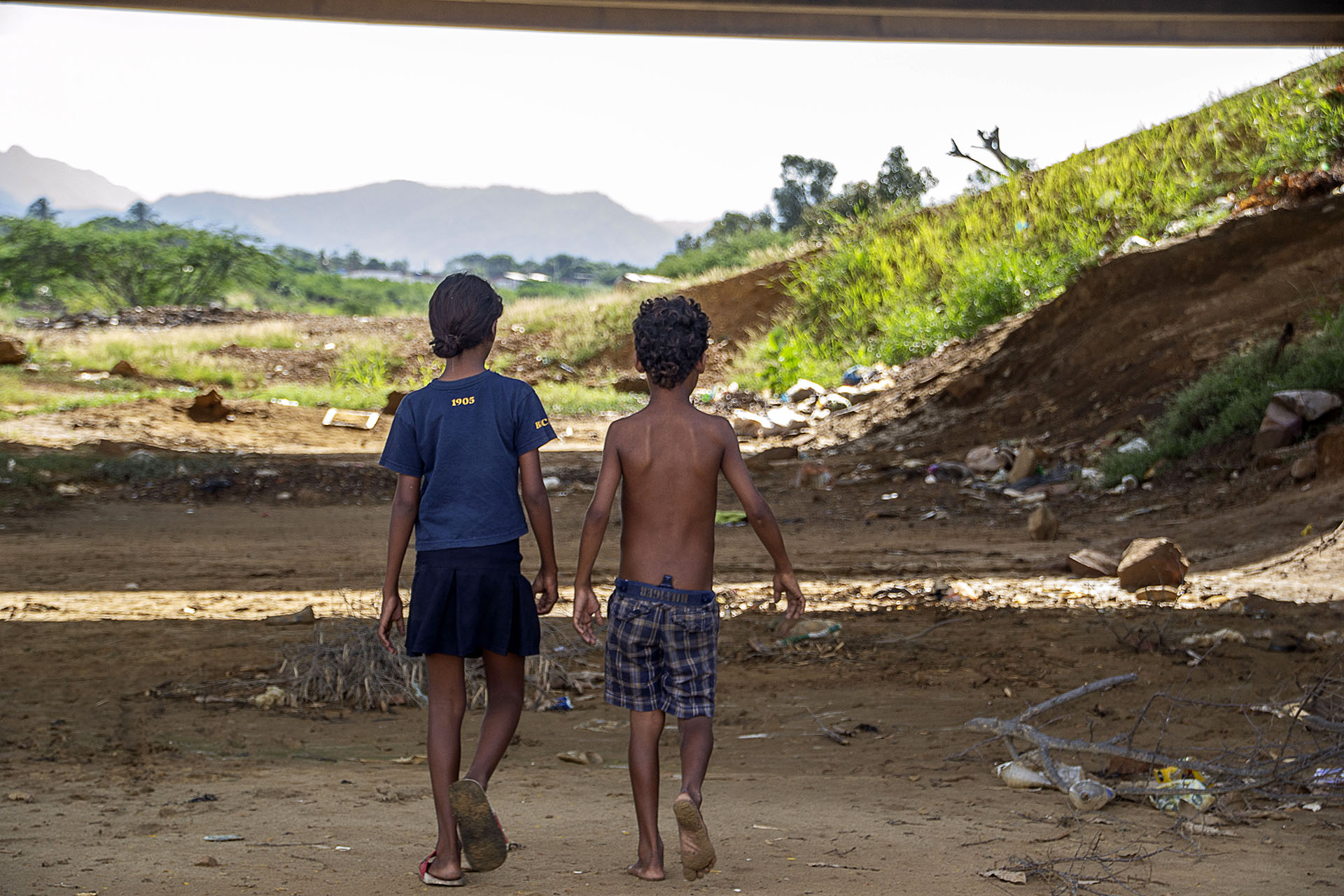

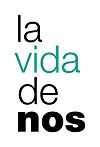 Marimar lives with her 11-year-old twins and a 10-month-old grandson in Las Bateas de Maurica, a village near Barcelona, the capital of the state of Anzoátegui, in eastern Venezuela. More often than not, she gets up in the morning not knowing for sure if they will have something to eat during the day.
Marimar lives with her 11-year-old twins and a 10-month-old grandson in Las Bateas de Maurica, a village near Barcelona, the capital of the state of Anzoátegui, in eastern Venezuela. More often than not, she gets up in the morning not knowing for sure if they will have something to eat during the day.

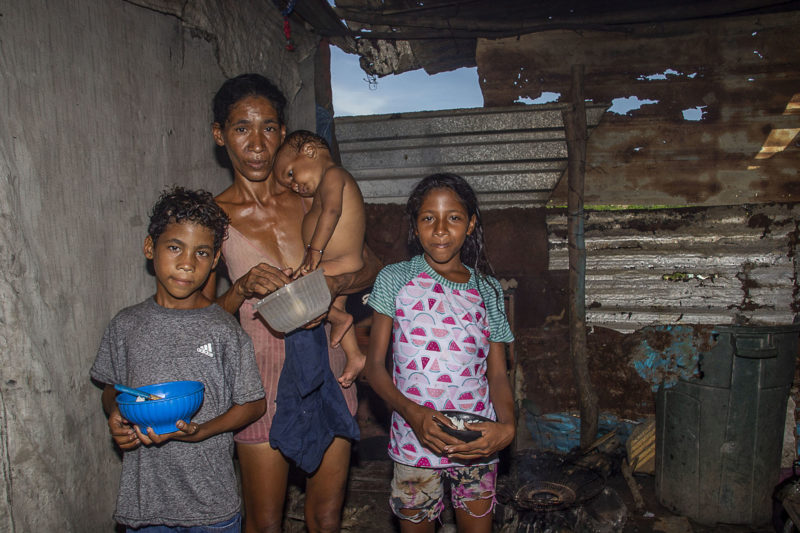
Very few people call Yenny Mata ‘Yenny’. Almost none of her neighbors in Las Bateas de Maurica know that that is her first name. Ever since she was a child, when she still lived in Bahía de Barcelona, a fishing village near Las Bateas, she has introduced herself as Marimar, because her friends used to make fun of her, saying that ´Yenny’ was a weird name.
Marimar rhymed with sea.
The sea that was there for all to see.
She gave birth to her first child at the age of seventeen. Her husband used to beat her. Not anymore. He was murdered while blind drunk some time ago. Now Marimar is forty-one years old and has four children: Junior, 24; Richard, 20; and the twins Andreína and Oscar, 11. The twins and Kender, the son of Richard, who migrated to Colombia in January of 2020 looking for job opportunities to alleviate the family’s hunger, are the only ones living with her.
I met Marimar four years ago, when I began to document the lives of the people of Las Bateas de Maurica, a largely forgotten community that lies a few kilometers from Barcelona, the capital of the state of Anzoátegui, in eastern Venezuela. Paradoxically, I came to this place because of its stunning seascape views. I wanted to capture with my camera the breathtaking sunsets and the fluttering of herons, scarlet ibises, and seagulls. I came looking for some peace and quiet. I wanted to get a break from reality.
Marimar’s story is not unlike that of the more than sixty families who live in houses that seem to be on the brink of collapse. I know that one hundred children there wake up every morning on an empty stomach.
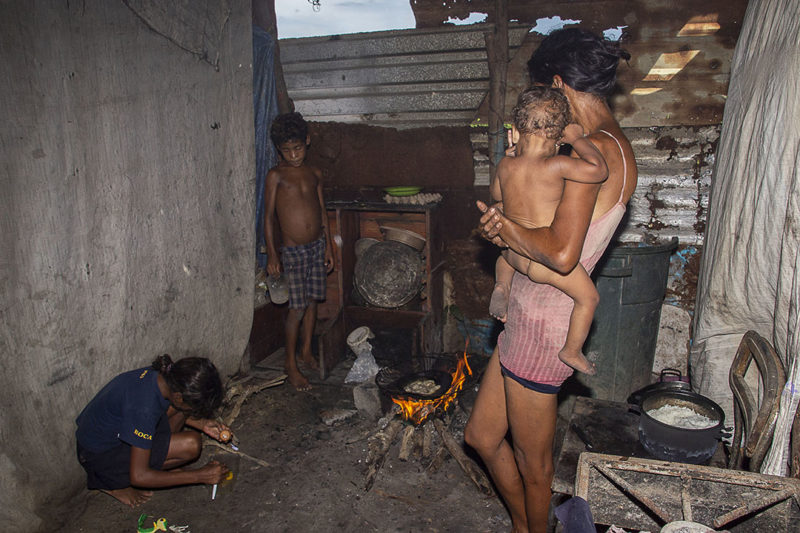
That is one of Marimar’s greatest concerns. Every single day, she has to wonder what to feed the little ones in her care. Although Richard sends some money from Colombia on the first days of each month, it does not buy much.
Today, when I arrived, the twins were not at the shack. As I was told later, they had left at 8:00 in the morning, looking for sticks to use as firewood to cook their food, which is what they have to do all the time because, as in so many other parts of the country, they don’t get cooking gas.
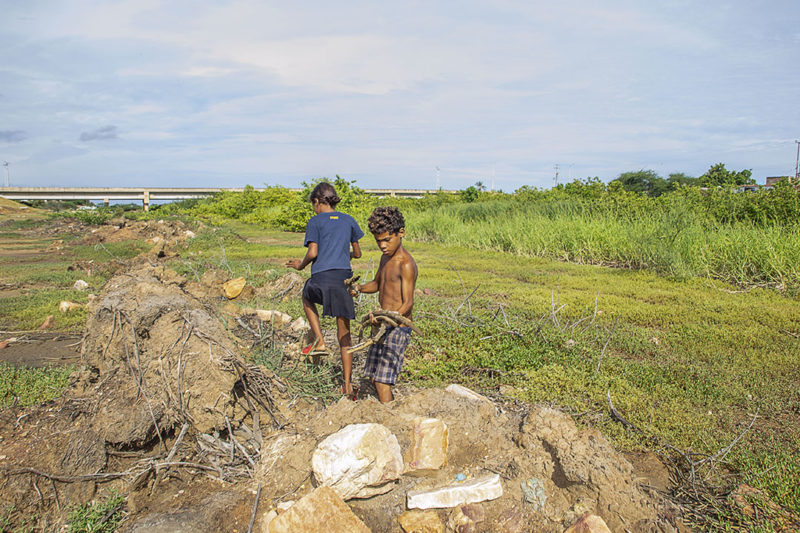
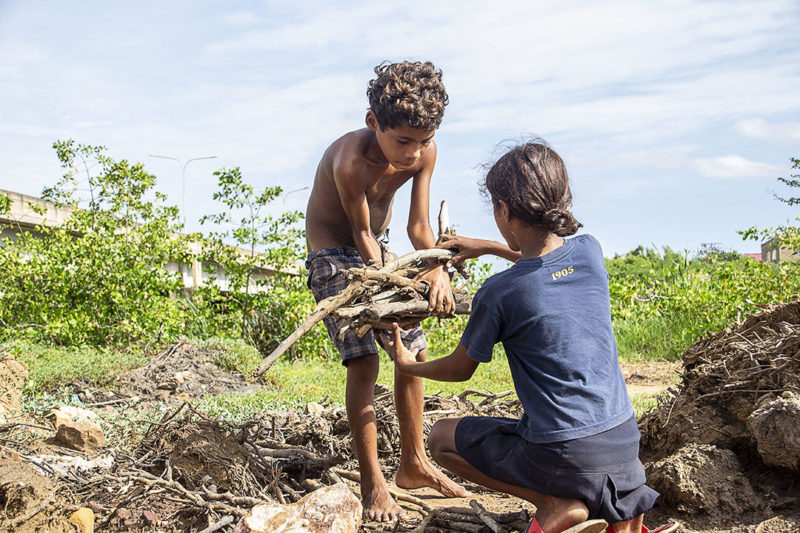
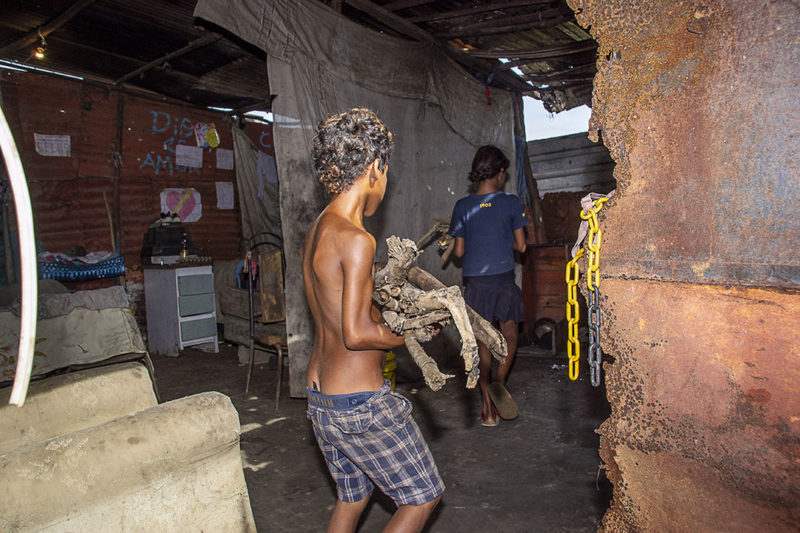
I looked for them. I followed their footsteps along the same stretch they had walked along the coast. I found them. They greeted me affectionately. We returned to the shack.
Oscar arranged the wood between two blocks of cement. With great skill, he set the fire with plastic bags and dry leaves. The shack immediately filled up with smoke. The flaming sticks gave off a very pungent smell. I had trouble breathing. I coughed. I coughed repeatedly. My eyes were burning. My throat itched.
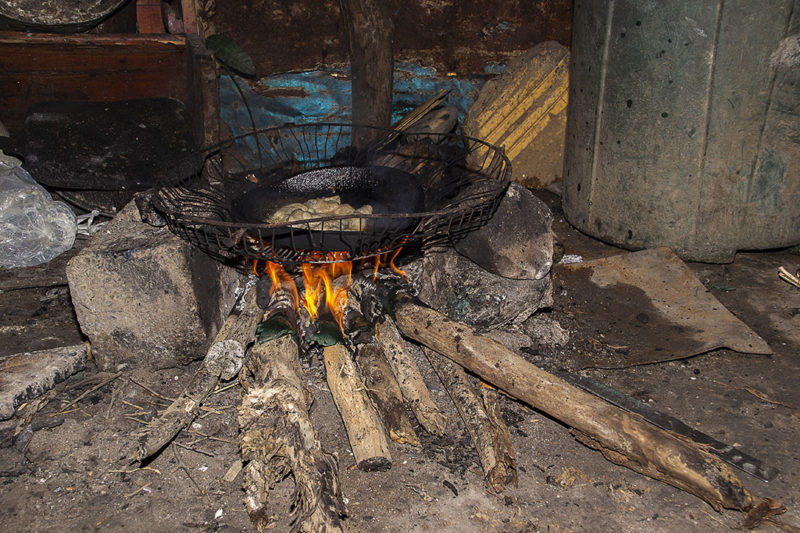
Andreína stoked the fire.
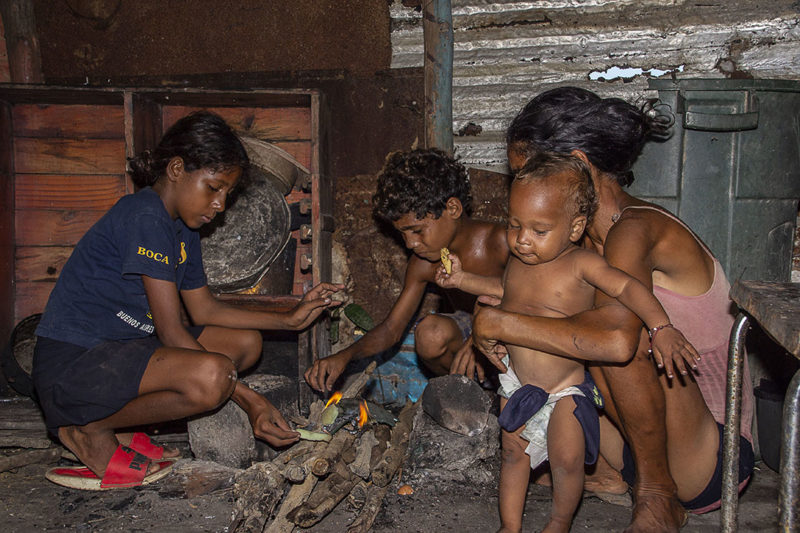
Marimar, who was just next to her, rocked her grandson, who was crying and upset because he was hungry.
Andreína fried some chicken skin and cooked some white rice. It was all they had. “At least they would not go through the day starving, like so many other times,” remarked Marimar.
She also told me of the times when she has had nothing to give the baby but wet cassava with a fruit-flavored beverage so that he can sleep at night. I was deeply moved by her words, as I have been with everything I have witnessed here. Although I have been visiting this community for a long time now, I can’t help but be shaken by testimonies like Marimar’s. Her family’s is a portrait of hunger. So is that of the many families living in Las Bateas de Maurica. I keep thinking that coming here, far from allowing myself to switch off from reality, has made me more aware of it.
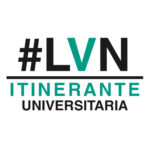 This story is part of La Ruta del Hambre [The Hunger Route], a publishing project developed by our network of storytellers in the 3rd year of the La Vida de Nos Itinerante training program.
This story is part of La Ruta del Hambre [The Hunger Route], a publishing project developed by our network of storytellers in the 3rd year of the La Vida de Nos Itinerante training program.
2411 readings
I was born in Caracas but I am oriental at heart. I have an associate degree in graphic design and I am currently working as a graphic reporter for El Tiempo and as a visual designer for the Marinos de Anzoátegui organization.